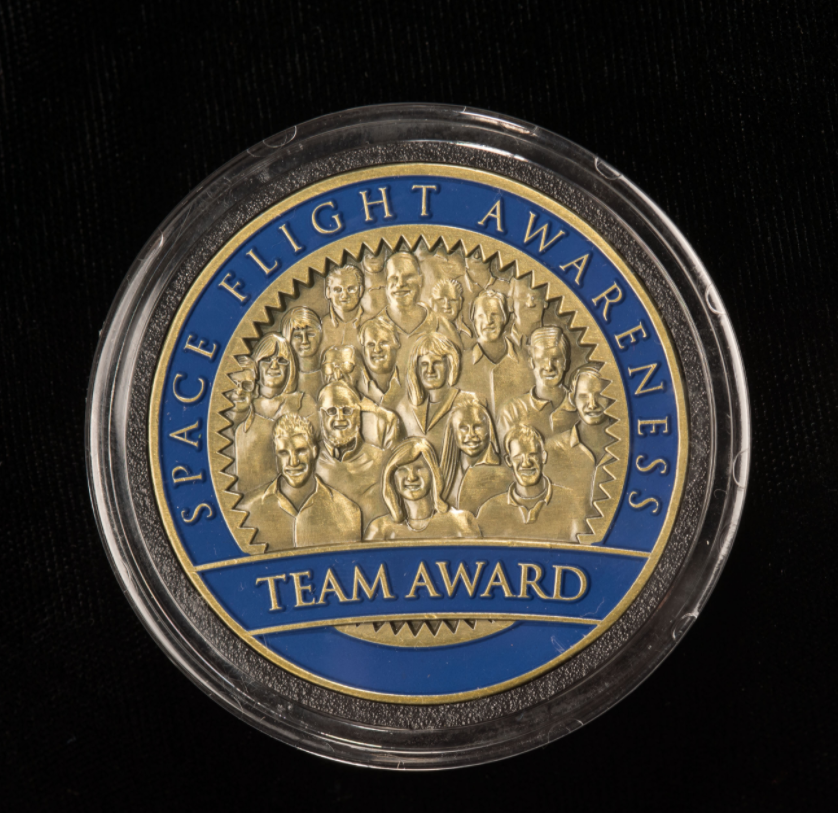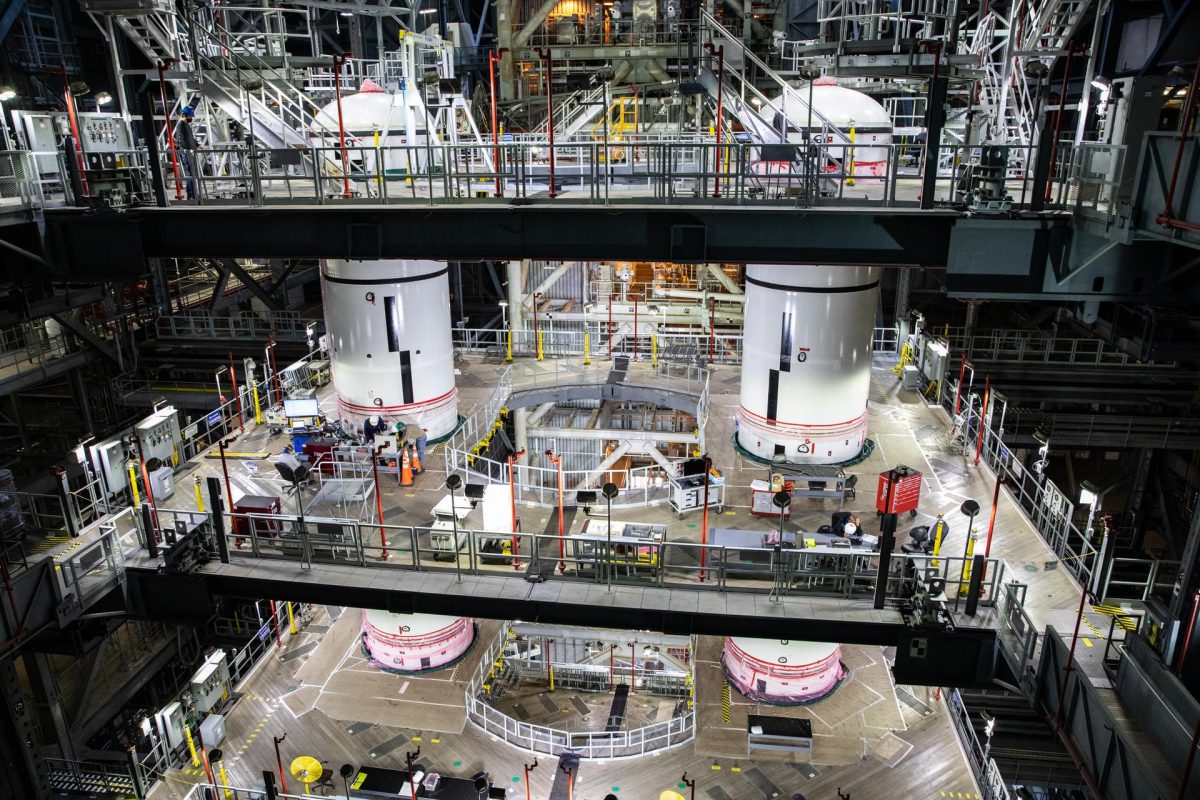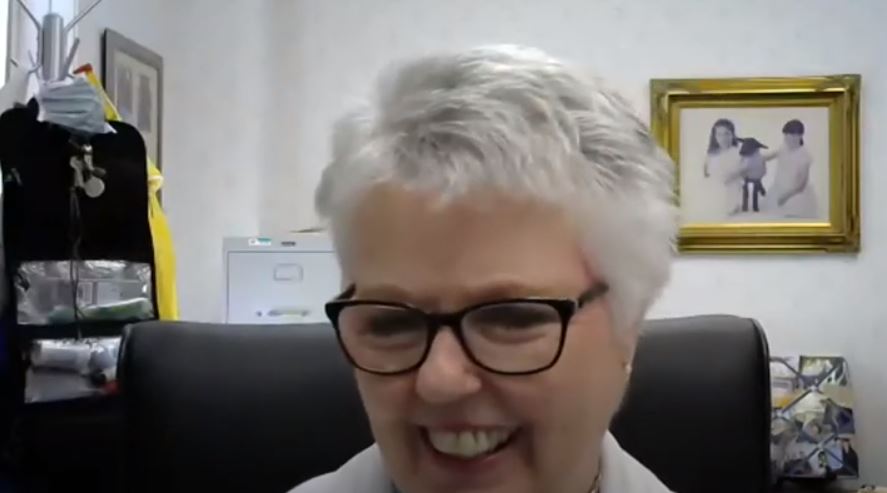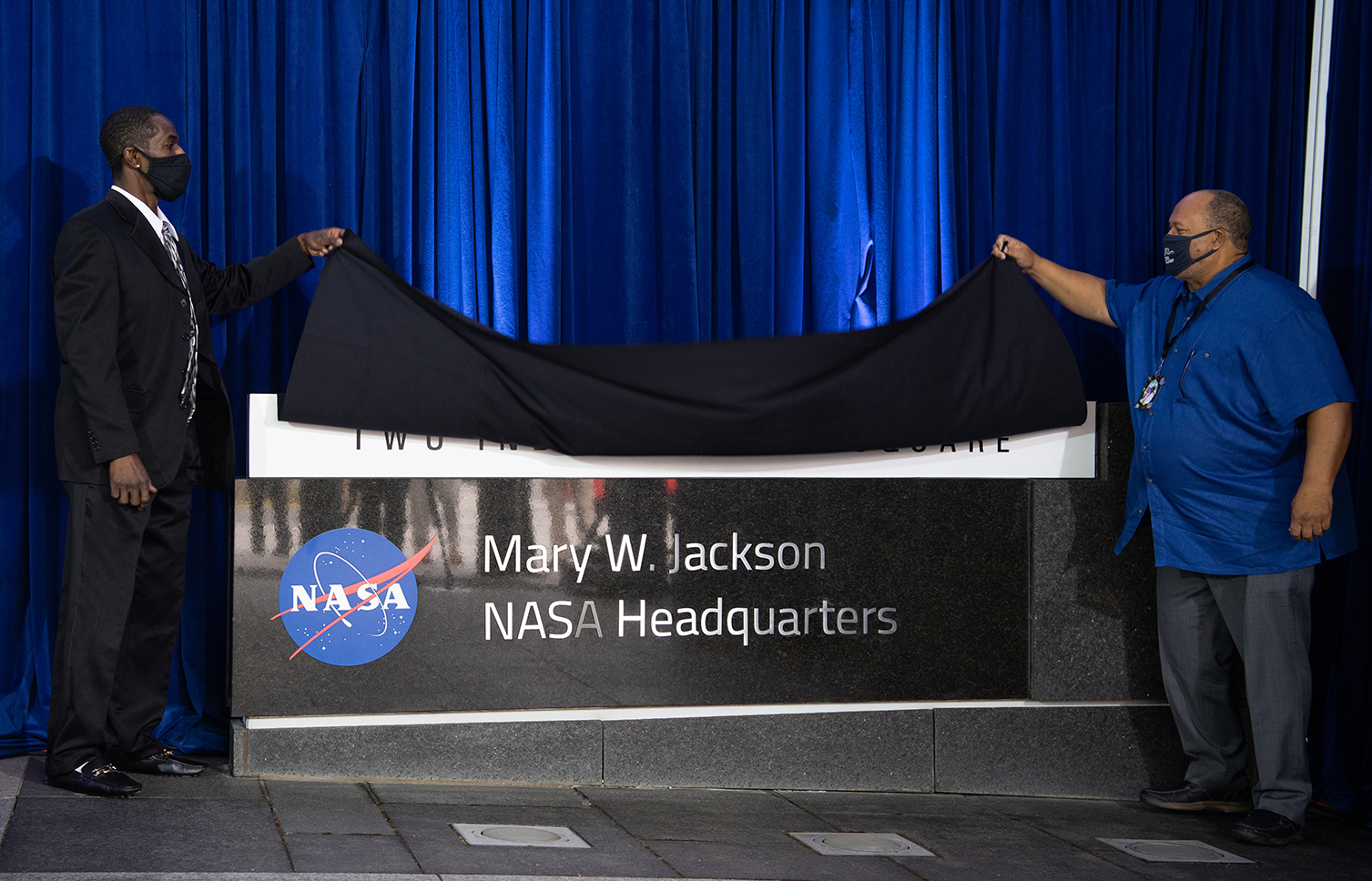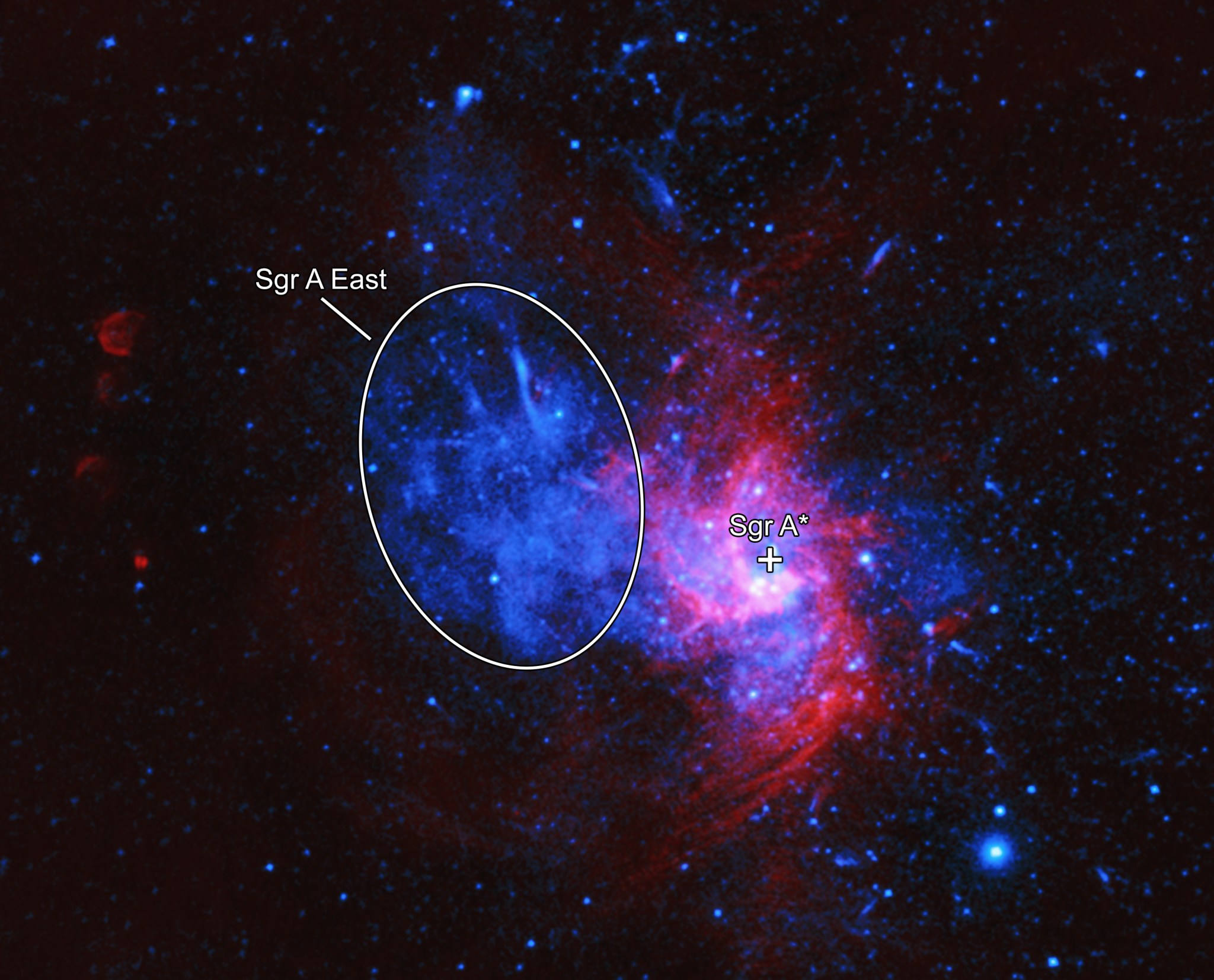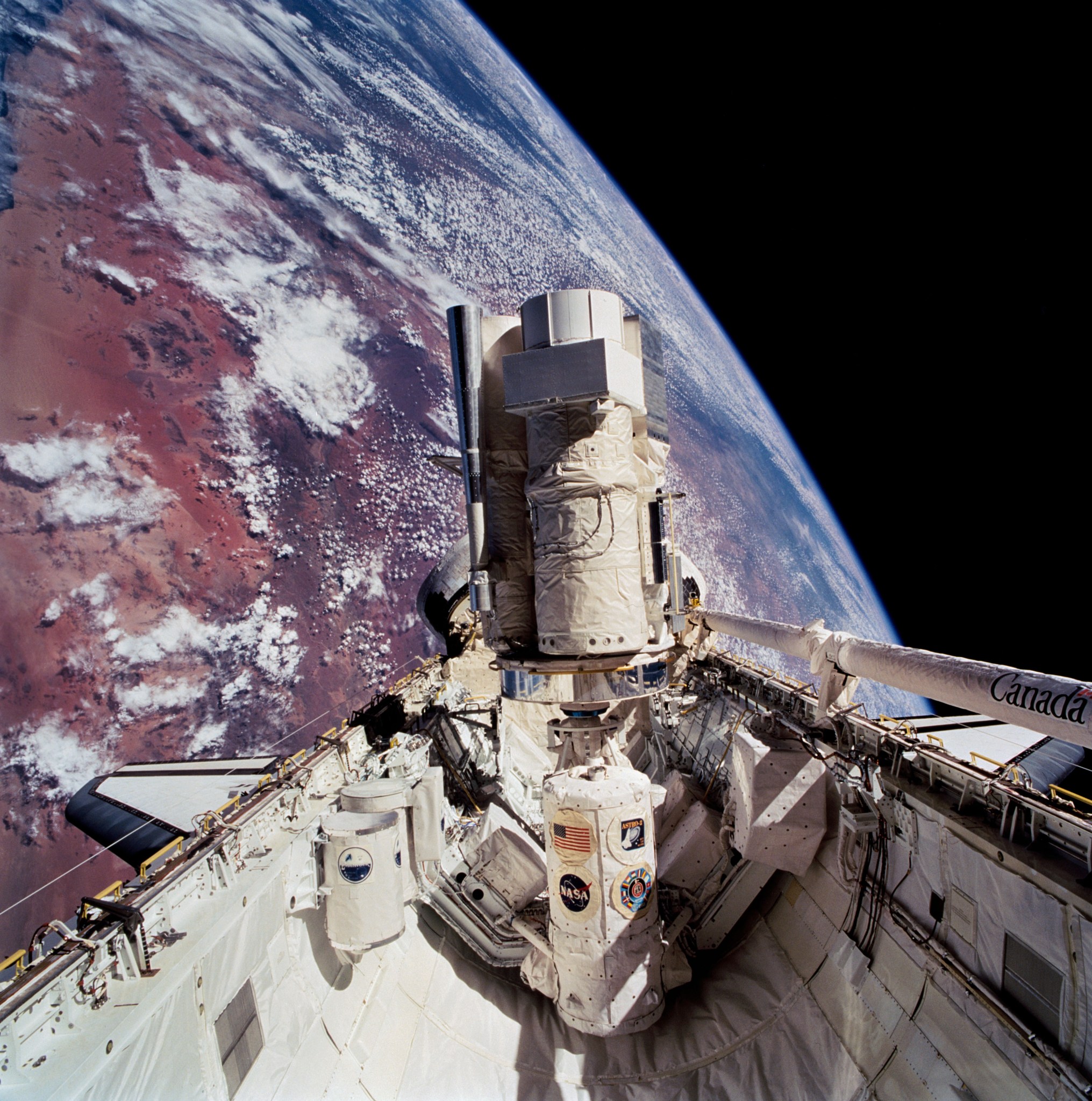9 Marshall Teams Honored with Space Flight Awareness Awards
By Taylor Goodwin
Nine teams from NASA’s Marshall Space Flight Center were honored with the agency’s Space Flight Awareness Team Award in a virtual ceremony Feb. 25. The annual award is presented to NASA civil servants and contractors who demonstrate strong work ethic and creative, innovative thinking in support of human spaceflight in the first seven years of their career.
“The teams at Marshall are not just people assigned to work together on a common goal,” said Larry Leopard, Marshall’s associate director, technical. “We are diligent, purposeful, and courageous – making the impossible possible so we can do things no one has ever done before, together.”
The teams and their accomplishments are:
- Transportation Ground Operations team, for exemplary performance and outstanding teamwork in overcoming complicated schedule and hardware challenges to move the SLS core stage vehicle from NASA’s Michoud Assembly Facility to the B-2 Test Stand at the agency’s Stennis Space Center.
- End User Service Communications Integration team, for significant contribution, performance, communication, and integration of the Office 365 Velocity Migration event – which was critical to mission support by strategically communicating the deployment of a new IT operations system critical to the advancement of NASA’s Moon to Mars missions.
- Merlin Turbopump Vibration Assessment team, for exemplary support in creating and implementing a vibration acceptance criteria for the SpaceX Merlin turbopump. The team significantly increased the reliability of the liquid engines of the Falcon 9 rocket. Their tireless efforts over a five-year period culminated in a vibration acceptance criteria, approved by the Commercial Crew Program manager – a significant addition of safety to human spaceflight in this new era of crewed flight.
- Space Launch System Ignition Over Pressure Sound Suppression Water Flow team, for outstanding technical contributions, diligence, and sacrifice enabling the successful completion of Mobile Launcher Sound Suppression Water Flow Testing. Sound suppression water controls hazards to the rocket from ignition over pressure at liftoff and ensures that the water was appropriately validated against the interface control requirements without causing unintended consequences to the rocket from on-pad shutdown events. This was key to mitigating key cross-program hazards.
- SLS Core Stage Liquid Hydrogen Tank Structural Test team, for outstanding dedication and contribution to successful completion of the SLS core stage liquid hydrogen tank structural qualification test.
- Cold Atom Laboratory Science Module Remove and Replacement team, for outstanding support, tireless efforts, and dedication to achieving the removal and replacement of a critical science module within the Cold Atom Laboratory – a multiuser facility designed to study ultra-cold quantum gases in a microgravity environment. This team worked diligently to overcome multiple obstacles leading up to the International Space Station Program direction and payload developer desire to perform this replacement effort in order to continue valuable science gathering.
- Human Landing System Program Planning and Control Office Business team, for sustained superior performance and dedication in establishing the necessary planning and reported processes needed to ensure the Human Landing System Program Planning and Control Office is postured for success
- Near-Earth Asteroid Scout team, for exemplary efforts in designed and building the NEA Scout spacecraft to pave the way for safely flying cube satellites on Artemis I and future missions.
- SLS Booster Separation Motor Aeroheat Shield Structural Analysis team, for providing exceptional leadership and support to NASA, the SLS program, and SLS booster element. This team’s technical expertise and ingenuity in data analysis and testing methodology have resulted in significant time and effort saved and improved confidence in the safety and performance of flight hardware.
Once the center returns to full capacity on-site, recipients will receive a certificate, medallion, and pin to honor their achievements.
“What you have done, in many cases, took years of effort,” Leopard said. “I know it wasn’t easy, but you looked a difficult task and said, ‘Yes, we can.’ That’s exactly what we expect from our Marshall team. Accomplishing these things means you jumped in with intention and figured it out, against all odds. You deserve these honors.”
Goodwin, a Media Fusion employee, supports Marshall’s Office of Strategic Analysis & Communications.
NASA Nears Completion of SLS Booster Stacking at Kennedy
Engineers with NASA’s Exploration Ground Systems have stacked the fifth and final pair of booster motor segments for NASA’s Space Launch System rocket onto the mobile launcher inside the Vehicle Assembly Building at NASA’s Kennedy Space Center. The left-hand and right-hand forward segments were secured on top of the center forward segments Feb. 23. Next, teams will place the nose assemblies on top of the segments to complete the boosters. The twin boosters will power the first flight of the SLS rocket during the launch of Artemis I. The mission is an uncrewed flight to test the SLS rocket and NASA’s Orion spacecraft as an integrated system. (NASA)
SLS Interim Cryogenic Propulsion Stage Moved Near Orion at Kennedy
Teams have moved the interim cryogenic propulsion stage for NASA’s Space Launch System rocket into the Multi-Payload Processing Facility at NASA’s Kennedy Space Center. The stage, which provides in-space propulsion to propel missions beyond Earth’s orbit on a precise trajectory forward to the Moon, is now alongside one of its flight partners for the Artemis I mission: NASA’s Orion spacecraft. It is the first time since the shuttle program that two pieces of flight hardware have been processed inside the facility at the same time. The interim cryogenic propulsion stage will remain close to Orion as teams will ultimately position the stage at the top of the SLS rocket just below the Orion capsule. Technicians with NASA’s Exploration Ground Systems and Jacobs Technology, the prime contractor, will fuel and serve both pieces of hardware in the facility ahead of the Artemis I launch. Once final checkouts are complete, the interim cryogenic propulsion stage and Orion will part ways on the ground and be reunited in the Vehicle Assembly Building at Kennedy for integration onto the SLS rocket. (NASA)
Dr. Karen Landers Updates Marshall Association on COVID-19 Vaccine
By Taylor Goodwin
The Marshall Association hosted a virtual luncheon featuring Dr. Karen Landers, assistant state health officer for the Alabama Department of Public Health, Feb. 4.
“I remember coming to Huntsville as a young child and being amazed at everything that was going on at NASA,” Landers said. “I feel like I’m coming back to something that has always been important in my life. I hope to shed some light on the pandemic response, and to help keep us all as safe as possible.”
Landers discussed her responsibilities in medical consultation for the department’s Immunization Division, including vaccine protocol, vaccines for children consultation, vaccine preventable disease investigations, and answering media inquiries regarding vaccine issues. As Alabama approaches the 500,000 million mark for positive COVID-19 cases, Landers reminded the audience to remain vigilant in mitigation efforts such as social distancing and wearing a properly fitted mask. Madison County has had over 32,000 cases and 442 deaths attributed to COVID-19 since the onset of the pandemic. Madison is the third leading county in vaccine administration.
“I think the most compelling reason to take whichever vaccine is available to you is the reduction of hospitalizations, reduction of severe disease, and reduction of mortality,” she said. “Each vaccine on the market is comparable, and I would encourage everyone to take it at the time you are eligible.”
Goodwin, a Media Fusion employee, supports Marshall’s Office of Strategic Analysis & Communications.
Together, We Achieve: Marshall Team Honors Black History Month
On Feb. 23, NASA’s Marshall Space Flight Center team members gathered virtually to celebrate Black History Month. Among participants were Amanda Otieno, upper left, equal opportunity specialist in Marshall’s Office of Diversity & Equal Opportunity, who welcomed Marshall budget analyst Andrea Brown and her daughter Jaya Lea Brown, upper right, to sing the national anthem. Marshall Director Jody Singer, lower left, also took part, encouraging team members to “continue to inspire the next generation of engineers, scientists, technicians, and leaders from every corner of our community.” Engineer, educator, and entrepreneur Pamela McCauley, lower right, associate dean of academic programs at North Carolina State University in Raleigh, delivered the keynote address, praising NASA’s “decades of leadership in diversity and inclusion.” She noted, “We are in a time where it is truly urgent that we utilize good engineering and science, and let them lead to innovations to address all types of challenges we’re facing in this global society.” The theme of Black History Month for 2021 is “Representation, Identity, and Diversity: Together, We Achieve.” Watch the video presentation on Inside Marshall, and learn more about Marshall team members who are making a difference here and here. Each February, Black History Month pays tribute to the generations of Black Americans who persevered through adversity to achieve citizenship and equal rights in American society. (NASA)
NASA’s Headquarters Named for ‘Hidden Figure’ Mary Jackson
Bryan Jackson, left, grandson of Mary Jackson, and Raymond Lewis, Jackson’s son-in-law, unveil the Mary W. Jackson NASA Headquarters sign during a ceremony officially naming the building Feb. 26. NASA announced its intent to name the building after Jackson, the agency’s first African American female engineer, in June 2020. Among the attendees were acting NASA Administrator Steve Jurczyk, Clayton Turner, director of NASA’s Langley Research Center, and Christine Darden, retired NASA engineer and one of Jackson’s fellow “Hidden Figures,” as profiled in Margot Lee Shetterly’s 2016 book. “With the official naming of the Mary W. Jackson NASA Headquarters today, we ensure that she is a hidden figure no longer,” Jurczyk said. “Jackson’s story is one of incredible determination. She personified NASA’s spirit of persevering against all odds, providing inspiration and advancing science and exploration.” (NASA/ Joel Kowsky)
NASA Cooks Up Something Special with Deep Space Food Challenge
NASA, in coordination with the Canadian Space Agency, is cooking up something special with the Deep Space Food Challenge. The challenge incentivizes the public to develop novel food system solutions for long-duration space missions. Step into the kitchen with celebrity chef Alton Brown to learn more. The Deep Space Food Challenge is a NASA Centennial Challenge managed within the Space Technology Office at NASA’s Marshall Space Flight Center. (NASA)
Rare Blast’s Remains Discovered in Milky Way Center
Astronomers may have found the Milky Way galaxy’s first example of an unusual kind of stellar explosion. This discovery, made with NASA’s Chandra X-ray Observatory, adds to the understanding of how some stars shatter and seed the universe with elements critical for life.
This intriguing object, located near the center of the Milky Way, is a supernova remnant called Sagittarius A East, or Sgr A East. Based on Chandra data, astronomers previously classified the object as the remains of a massive star that exploded as a supernova, one of many kinds of exploded stars that scientists have catalogued.
Using longer Chandra observations, a team of astronomers have now instead concluded that the object is left over from a different type of supernova. It is the explosion of a white dwarf, a shrunken stellar ember from a fuel-depleted star like the Sun. When a white dwarf pulls too much material from a companion star or merges with another white dwarf, the white dwarf is destroyed, accompanied by a stunning flash of light.
Astronomers use these Type Ia supernovae because most of them mete out almost the same amount of light every time no matter where they are located. This allows scientists to use them to accurately measure distances across space and study the expansion of the universe.
Data from Chandra have revealed that Sgr A East, however, did not come from an ordinary Type Ia. Instead, it appears to belong to a special group of supernovae that produce different relative amounts of elements than traditional Type Ias do, and less powerful explosions. This subset is referred to as “Type Iax,” a potentially important member of the supernova family.
“While we’ve found Type Iax supernovae in other galaxies, we haven’t identified evidence for one in the Milky Way until now,” said Ping Zhou of Nanjing University in China, who led the new study while at the University of Amsterdam. “This discovery is important for getting a handle of the myriad ways white dwarfs explode.”
The explosions of white dwarfs are one of the most important sources of elements like iron, nickel, and chromium. The only place that scientists know these elements can be created is inside the nuclear furnace of stars or when they explode.
“This result shows us the diversity of types and causes of white dwarf explosions, and the different ways that they make these essential elements,” said co-author Shing-Chi Leung of the California Institute of Technology in Pasadena, California. “If we’re right about the identity of this supernova’s remains, it would be the nearest known example to Earth.”
Astronomers are still debating the cause of Type Iax supernova explosions, but the leading theory is that they involve thermonuclear reactions that travel much more slowly through the star than in Type Ia supernovae. This relatively slow walk of the blast leads to weaker explosions and, hence, different amounts of elements produced in the explosion. It is also possible that part of the white dwarf is left behind.
Sgr A East is located very close to Sagittarius A*, the supermassive black hole in the center of the Milky Way, and likely intersects with the disk of material surrounding the black hole. The team was able to use Chandra observations targeting the supermassive black hole and the region around it for a total of about 35 days to study Sgr A East and find the unusual pattern of elements in the X-ray data. The Chandra results agree with computer models predicting a white dwarf that has undergone slow-moving nuclear reactions, making it a strong candidate for a Type Iax supernova remnant.
In other galaxies, scientists observe that Type Iax supernovae occur at a rate that is about one-third that of Type Ia supernovae. In the Milky Way, there have been three confirmed Type Ia supernova remnants and two candidates that are younger than 2,000 years, corresponding to an age when remnants are still relatively bright before fading later. If Sgr A East is younger than 2,000 years and resulted from a Type Iax supernova, this study suggests that the Milky Way is in alignment with respect to the relative numbers of Type Iax supernovae seen in other galaxies.
NASA’s Marshall Space Flight Center manages the Chandra program. The Smithsonian Astrophysical Observatory’s Chandra X-ray Center controls science from Cambridge Massachusetts and flight operations from Burlington, Massachusetts.
Read the full feature here.
Read more about Chandra here. For more Chandra images, multimedia, and related materials, visit here.
This Week in NASA History: ASTRO-2 Launches – Mar. 2, 1995
This week in 1995, the ASTRO-2 Spacelab was launched aboard the space shuttle Endeavour, mission STS-67, from NASA’s Kennedy Space Center. ASTRO-2 mission included observation and remote exploration of the universe in the ultraviolet wavelengths of light. Here, the Instrument Pointing System, Hopkins Ultraviolet Telescope, Star Tracker, Ultraviolet Imaging Telescope, Wisconsin Ultraviolet Photo-Polarimeter Experiment, and Integrated Radiator System are visible on the Spacelab pallet. The Igloo, which supported the package of experiments, can be seen in the center foreground. NASA’s Marshall Space Flight Center supervised development of the Astro observatory and managed Astro missions. Today, the Payload Operations Integration Center at Marshall serves as “science central” for the International Space Station, working 24/7, 365 days a year in support of the orbiting laboratory’s science experiments. After 20 years of continuous human presence, the space station remains the sole space-based proving ground and stepping stone toward achieving the goals of the Artemis program. The NASA History Program is responsible for generating, disseminating, and preserving NASA’s remarkable history and providing a comprehensive understanding of the institutional, cultural, social, political, economic, technological, and scientific aspects of NASA’s activities in aeronautics and space. For more pictures like this one and to connect to NASA’s history, visit the Marshall History Program’s webpage. (NASA)


























